Disclosure: This article contains affiliate links. We may earn a commission from purchases at no extra cost to you, which helps our travel content.
The moment my fins touched the crystal-clear waters surrounding Weno, I knew this remote Micronesian paradise would forever change my perspective on underwater exploration. As someone who's traversed desert landscapes and studied architectural wonders above ground, diving among the ghostly WWII shipwrecks and technicolor coral gardens of Chuuk Lagoon (formerly Truk Lagoon) offered a profound historical immersion unlike anything I've experienced before. This underwater museum—where massive Japanese supply ships rest in their watery graves alongside fighter planes, tanks, and artillery—tells stories of conflict, sacrifice, and nature's remarkable resilience. After spending two extraordinary weeks exploring these depths with a group of fellow history enthusiasts and marine biology buffs, I'm sharing my comprehensive guide to experiencing this living memorial that honors both human history and marine biodiversity.
Understanding Weno and Chuuk Lagoon's Historical Significance
Before strapping on your dive gear, understanding the historical context of what you'll witness transforms these dives from mere underwater exploration to meaningful historical pilgrimage.
Chuuk Lagoon (formerly Truk Lagoon) served as Japan's main naval base in the South Pacific during WWII until February 1944, when Operation Hailstone—a massive Allied attack—sank over 60 Japanese ships and destroyed hundreds of aircraft in just two days. This devastating military strike effectively crippled the Japanese Imperial Navy and created what is now considered one of the world's greatest wreck diving destinations.
What makes Weno particularly special is how these sunken vessels have transformed into artificial reefs teeming with marine life. Nature has reclaimed these instruments of war, turning them into sanctuaries of life—a powerful metaphor I found myself contemplating during surface intervals between dives.
Beyond the wrecks, Weno's surrounding islands feature remnants of Japanese command centers, bunkers, and coastal defense positions that provide crucial context to what lies beneath the waves. Taking time to visit these land-based historical sites creates a more complete understanding of this pivotal WWII theater.
As a lawyer who values comprehensive understanding, I recommend reading up on Operation Hailstone before your trip. The historical diving guide provided invaluable context that enhanced every dive, allowing me to recognize specific vessels and understand their roles in the imperial fleet.

💡 Pro Tips
- Visit the Chuuk Historical Museum in Weno before your first dive for crucial historical context
- Consider hiring a local guide for land-based WWII site tours to understand the complete historical picture
- Pack a waterproof notebook to document vessel names and historical details underwater
Planning Your Dive Expedition: Logistics and Preparations
Reaching Weno requires dedication—this remote paradise demands careful planning, but rewards intrepid travelers with uncrowded dive sites and pristine conditions.
Weno is accessible via United Airlines' Island Hopper route that connects Hawaii to Guam, stopping at several Micronesian islands along the way. I recommend building flexibility into your travel schedule, as weather delays are common in this region. Upon arrival at Chuuk International Airport on Weno, most dive resorts offer direct transfers.
For this expedition, I chose the dive computer which proved invaluable for the multiple daily dives we completed. With many wrecks sitting between 30-45 meters deep, having reliable decompression tracking was essential for safety and maximizing bottom time.
Accommodation options in Weno range from basic to luxurious, but I highly recommend staying at one of the dedicated dive resorts that cater specifically to serious divers. The Blue Lagoon Resort and Truk Stop Hotel offer comprehensive packages that include accommodation, meals, and guided diving. For true luxury, the live-aboard vessels that cruise Chuuk Lagoon provide unparalleled convenience with the ability to wake up directly above different dive sites each morning.
Advance booking is essential, especially for the premium dive boats that access the most spectacular wrecks. I secured my reservation six months ahead and was glad I did, as the best operations run with small groups to ensure personalized attention and minimal impact on these delicate historical sites.
Regarding dive certification, this destination is definitively for advanced divers. Many wrecks sit beyond recreational limits, so having Advanced Open Water certification is the minimum requirement, while Nitrox certification will significantly extend your bottom time. For penetration dives inside the wrecks (which offer the most spectacular experiences), wreck diving specialty certification is strongly recommended.
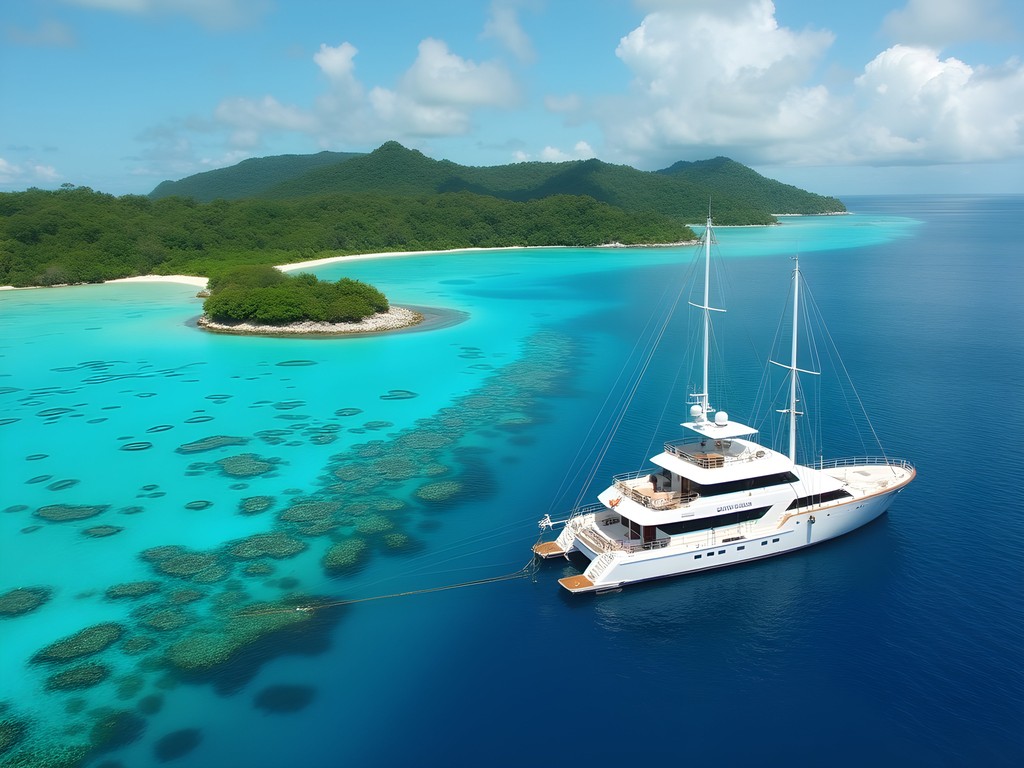
💡 Pro Tips
- Book your dive package at least 6 months in advance to secure spots with the best operators
- Invest in DAN (Divers Alert Network) insurance before your trip—the remote location makes evacuation extremely expensive if needed
- Pack spare O-rings and basic maintenance tools for your gear, as replacement parts are limited on the island
Must-Dive Shipwrecks: Underwater Time Capsules
Chuuk Lagoon houses over 60 shipwrecks, but certain vessels stand out as extraordinary underwater time capsules that shouldn't be missed. After completing 24 dives during my stay, these are the wrecks that left the most profound impression.
The Fujikawa Maru reigns as the queen of Chuuk diving. This 437-foot cargo vessel sits upright between 18-34 meters deep, making it accessible while still offering technical challenges. What makes this wreck exceptional are the remarkably preserved Zero fighter planes in its forward holds. Swimming through the cargo bay and suddenly coming face-to-face with these iconic aircraft—their cockpits and wings still recognizable—creates an emotional connection to history unlike anything I've experienced on land.
For those seeking the thrill of deeper exploration, the Shinkoku Maru offers an incredible opportunity to witness an oil tanker reclaimed by vibrant marine life. At 40 meters deep, the ship's medical bay still contains medicine bottles, surgical equipment, and even a bathtub. The ship's exterior has transformed into a kaleidoscopic reef where black coral trees and massive sea fans create a living memorial.
The San Francisco Maru, often called the "Million Dollar Wreck" due to its exceptional cargo, sits at a challenging 45-63 meters depth. This deep dive rewards technical divers with three Japanese battle tanks still lined up on the deck, along with trucks, mines, bombs, and torpedoes. This wreck requires advanced planning and often decompression stops, but witnessing these perfectly preserved war machines resting in silent formation creates an unforgettable historical connection.
For those interested in aircraft wrecks, the Betty Bomber at Etten Island offers a remarkably intact Mitsubishi G4M aircraft. Unlike many of the deeper wrecks, this site sits at a manageable 15 meters, allowing extended bottom time to study the plane's structure, including visible machine gun positions and cockpit details.
Navigating these complex underwater environments requires proper lighting. My dive torch proved essential for illuminating dark interiors and bringing out the vibrant colors that would otherwise be lost to the water's blue filter.
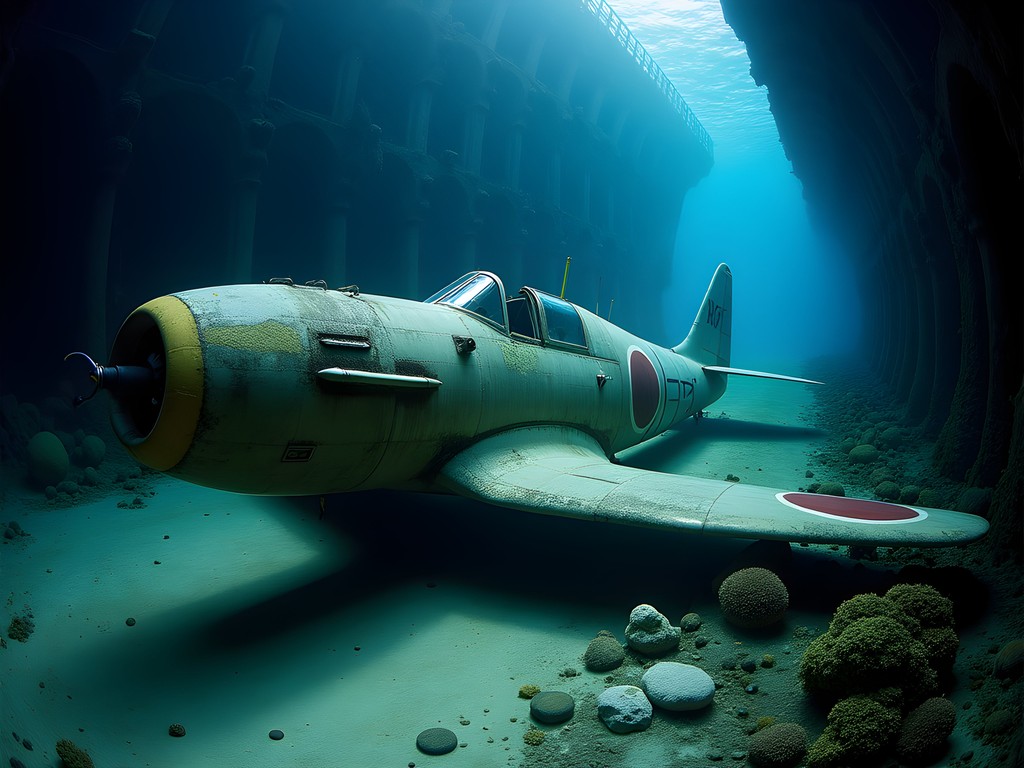
💡 Pro Tips
- Photograph the exterior of wrecks before penetration to help with orientation during exit
- Bring a reef hook for the San Francisco Maru dive as currents can be strong at depth
- Schedule your deepest dives early in your trip while you're well-rested and save shallower coral garden dives for later
Coral Gardens: Where Vibrant Marine Life Thrives
While Weno's shipwrecks rightfully claim the spotlight, the region's pristine coral gardens deserve equal attention. These vibrant underwater ecosystems offer spectacular biodiversity and a welcome contrast to the sometimes somber experience of exploring war relics.
Toagachi Island Pass presents one of the most exhilarating drift dives I've experienced. The channel's strong currents bring nutrient-rich waters that support spectacular hard coral formations and attract larger pelagic species. During our dive, we encountered gray reef sharks, eagle rays, and a curious Napoleon wrasse that seemed to pose for photographs. The current does the work as you glide effortlessly over a landscape of table corals and massive brain coral formations that have flourished undisturbed for centuries.
For a more relaxed experience, the North Pass Coral Gardens provide a shallow dive suitable for extended bottom time. Here, the soft coral displays are simply unmatched—vibrant purple sea whips, neon orange fan corals, and delicate pink anemones create an underwater palette that defies description. The site serves as a nursery for smaller reef fish, with clouds of anthias and damselfish darting among the coral heads.
Perhaps the most magical experience came during our night dive at the Jeep Reef, named for a submerged WWII vehicle now completely encrusted with coral. As darkness fell, the reef transformed—feeding corals extended their polyps, bioluminescent organisms began to glow, and hunting nocturnal predators emerged from their daytime hiding spots. Using my underwater camera, I captured stunning macro images of coral polyps feeding in the current, their tiny tentacles glowing under my focus light.
The health of Weno's coral ecosystems speaks to the relatively limited tourism impact in this remote region. Unlike more accessible destinations where coral bleaching and diver damage are evident, these reefs remain remarkably pristine. This reinforced my commitment to responsible diving practices—maintaining proper buoyancy, never touching marine life, and being mindful of fin kicks near delicate structures.
These coral dives also provided welcome decompression opportunities between the deeper wreck explorations, allowing our group to extend our overall bottom time while adhering to safe diving protocols.

💡 Pro Tips
- Schedule coral garden dives as your second dive of the day after deeper wreck exploration
- Bring a reef hook for drift dives in Toagachi Pass where currents can be strong
- Pack a UV light for night dives to witness the spectacular fluorescence of certain coral species
Cultural Immersion: Connecting with Weno's Communities
While Weno's underwater attractions command most visitors' attention, I've found that meaningful travel experiences always include connecting with local communities. As a public defender who values cultural exchange, I made it a priority to explore beyond the dive sites.
Weno's indigenous Chuukese culture has survived centuries of colonial influence, from Spanish and German rule to Japanese occupation and later American administration. Today, traditional practices coexist alongside modern influences, creating a fascinating cultural landscape.
On our surface interval days, our group visited Weno's main town of Mwan, where local markets offered a glimpse into daily life. Unlike tourist-oriented markets elsewhere in the Pacific, these authentic gathering places feature local produce, freshly caught fish, and handcrafted items made for community use rather than tourist consumption.
One particularly meaningful experience was participating in a traditional feast organized by our dive resort in collaboration with a local family. We were invited to witness the preparation of local specialties like uon (breadfruit), sashimi prepared from the day's catch, and coconut crab—considered a delicacy in the region. The meal concluded with sakau, a ceremonial drink similar to kava found elsewhere in the Pacific.
During this gathering, elders shared stories about how the lagoon's shipwrecks have influenced local history. For generations after WWII, these wrecks provided salvageable materials for building homes and boats. Today, they represent an important economic resource through dive tourism, creating a complex relationship between historical preservation and livelihood.
I was particularly moved by conversations with younger community members about their efforts to document traditional navigation techniques and marine knowledge that allowed their ancestors to master these waters long before GPS and modern technology. This oral history connects directly to marine conservation efforts now being implemented to protect the lagoon's biodiversity.
For those interested in deeper cultural understanding, I recommend bringing a small waterproof field notebook to document these meaningful exchanges and preserve the stories shared by local community members—something I've found invaluable for respectful cultural immersion.

💡 Pro Tips
- Learn a few basic Chuukese phrases as a sign of respect when interacting with local communities
- Ask permission before photographing people or cultural practices
- Support locally-owned businesses rather than only patronizing resort facilities
Final Thoughts
As our seaplane lifted off from Weno's lagoon on our final day, I gazed down at the turquoise waters concealing the underwater museum we'd spent two weeks exploring. These shipwrecks—once instruments of war—have transformed into sanctuaries of life and powerful memorials that connect us to history in ways no textbook ever could. Diving Weno isn't merely about checking wrecks off a list; it's about bearing witness to both human history and nature's remarkable resilience. Whether you're captivated by WWII history, marine biology, or simply seeking adventure beyond the ordinary, Chuuk Lagoon offers a profound experience that will transform your understanding of our world both above and below the surface. As travelers privileged to access these sites, we carry the responsibility to approach them with respect, preserve their integrity for future generations, and support the local communities who serve as their stewards. When will you answer the call of Weno's depths?
✨ Key Takeaways
- Weno's shipwrecks offer a unique combination of historical significance and thriving marine ecosystems
- Advanced diving certification and proper equipment are essential for safely exploring these underwater time capsules
- Cultural immersion with local communities provides crucial context to understand the region beyond its underwater attractions
- Responsible diving practices are essential to preserve these delicate historical and ecological treasures
📋 Practical Information
Best Time to Visit
Year-round, with slightly better visibility December-April
Budget Estimate
$5,000-8,000 USD for a two-week luxury dive package including accommodation, meals, and guided dives
Recommended Duration
Minimum 10-14 days to experience multiple wrecks and coral sites
Difficulty Level
Advanced - Requires Advanced Open Water Certification Minimum, Nitrox And Wreck Specialty Recommended

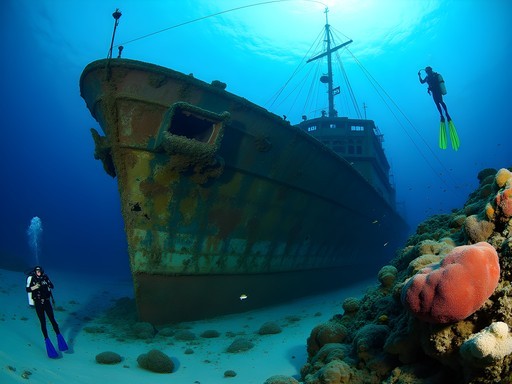
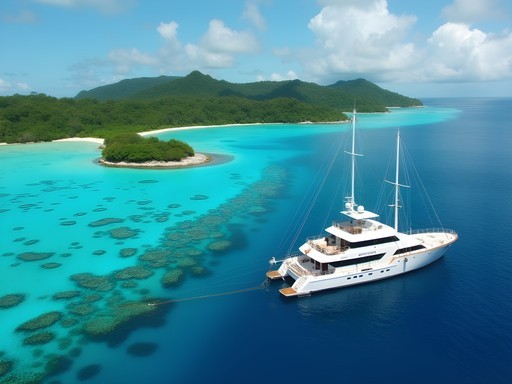
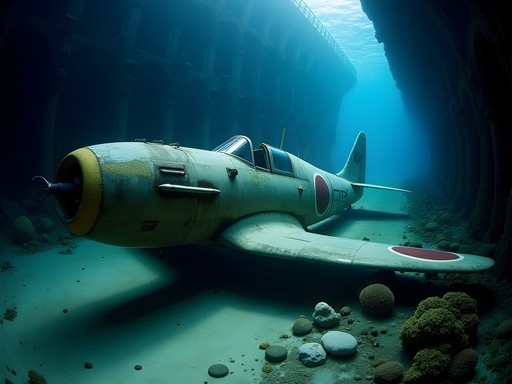












Comments
nomadnomad
Those shipwrecks look incredible! Adding Weno to my bucket list right now.
Savannah Torres
Thanks! It's truly a diver's paradise - hope you get to experience it!
MarinePhotographer
That shot of the coral growing on the ship's wheel is absolutely stunning! What camera setup did you use underwater?
Savannah Torres
Thank you! I used a Sony A7III in a Nauticam housing with dual Sea&Sea strobes. The natural light filtering through at that depth created that magical glow!
cityhero
Just booked my flights to Micronesia after reading this! Can't wait!
OceanWanderer
Just got back from Weno last month and this guide is spot on! The Nippo Maru was my favorite - those anti-aircraft guns still pointing skyward gave me chills. One tip I'd add: bring reef-safe sunscreen as the local shops have limited options. The currents were stronger than I expected around some wrecks, so being comfortable in current is definitely important. Loved the local guides' knowledge of both the marine life and WWII history.
dreamhero
Thanks for the current tip! Did you need special equipment for the wreck penetrations?
OceanWanderer
I brought my own torch but the dive shop had good rental equipment. Definitely want at least two lights for penetration dives. And gloves helped with the occasional sharp edges!
Stephanie Romano
Savannah, your guide brought back so many memories! We took our teens (both certified divers) to Weno last summer and it became our most memorable family trip ever. The moment my 16-year-old spotted his first Japanese Zero fighter plane underwater, his history lessons suddenly came alive. We went with Truk Stop Hotel's dive operation - they were fantastic with kids and customized depths for their experience levels. The coral gardens were perfect for afternoon relaxation dives between the more challenging wrecks. One unexpected highlight: meeting locals who shared stories passed down from grandparents who witnessed the Operation Hailstone attack. That human connection made the underwater museum even more poignant. For families considering this trip - it's challenging to reach but absolutely worth it!
TravelingTeacher
How's the visibility typically? Going during rainy season worth it for fewer crowds?
Savannah Torres
Visibility is usually 50-100ft during dry season (Dec-April), but can drop to 30-60ft during rainy months. I went in February - perfect conditions but yes, busier. The tradeoff might be worth it if you don't mind occasional rain topside!
sunsetfan
Great post! I'm an advanced diver but my partner is only Open Water certified. Would they still be able to enjoy the wrecks or are they all deep technical dives?
oceanperson
Many wrecks have shallow sections. Heian Maru and Kiyosumi Maru have parts at 15-20m. Perfect for OW divers.
DiveExplorer92
Those photos of the engine room on the Fujikawa Maru are incredible! Bucket list dive for sure.
coollover
We were in Chuuk last year and it's truly a special place. The Shinkoku Maru was our favorite - the medical supplies and operating room were eerie but fascinating. Make sure to bring spare o-rings for your gear since it's hard to find replacements there. Also worth noting that internet is spotty at best, so download any dive guides beforehand!
Claire Hawkins
What an incredible guide, Savannah! We took our kids (12 and 14) to Weno last year, and it was an experience we'll never forget. The Shinkoku Maru was our family favorite - my daughter couldn't stop talking about seeing those bathtubs still intact after all these years! For families considering this trip, I'd add that the Blue Lagoon Resort was super accommodating for our kids with intro dives. Also, don't miss the land tour of the Japanese communications center - adds so much context to what you'll see underwater. I used my underwater camera for all our dives and the photos came out crystal clear even at depth. The coral gardens were actually more impressive to us than some we've seen in the Caribbean!
dreamhero
Claire - did your kids find it difficult? My son is 13 and just got certified but I'm worried the wrecks might be too advanced.
Claire Hawkins
My 14-year-old was certified and handled it well! For our 12-year-old, the dive masters at Blue Lagoon were amazing with arranging appropriate dives. Some wrecks have shallower sections perfect for beginners. The Heian Maru sits in clearer water and was a good starter wreck for them!
Venture X
Premium card with 2X miles, $300 travel credit, Priority Pass